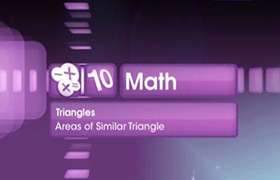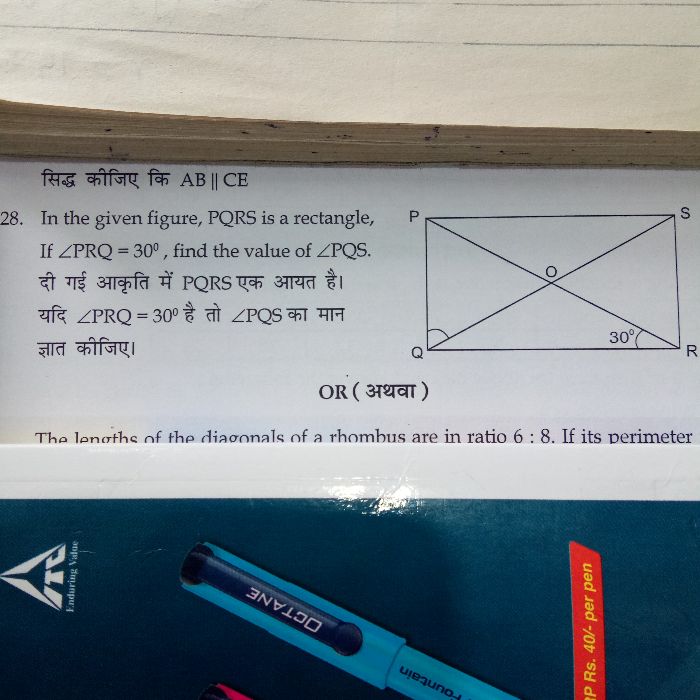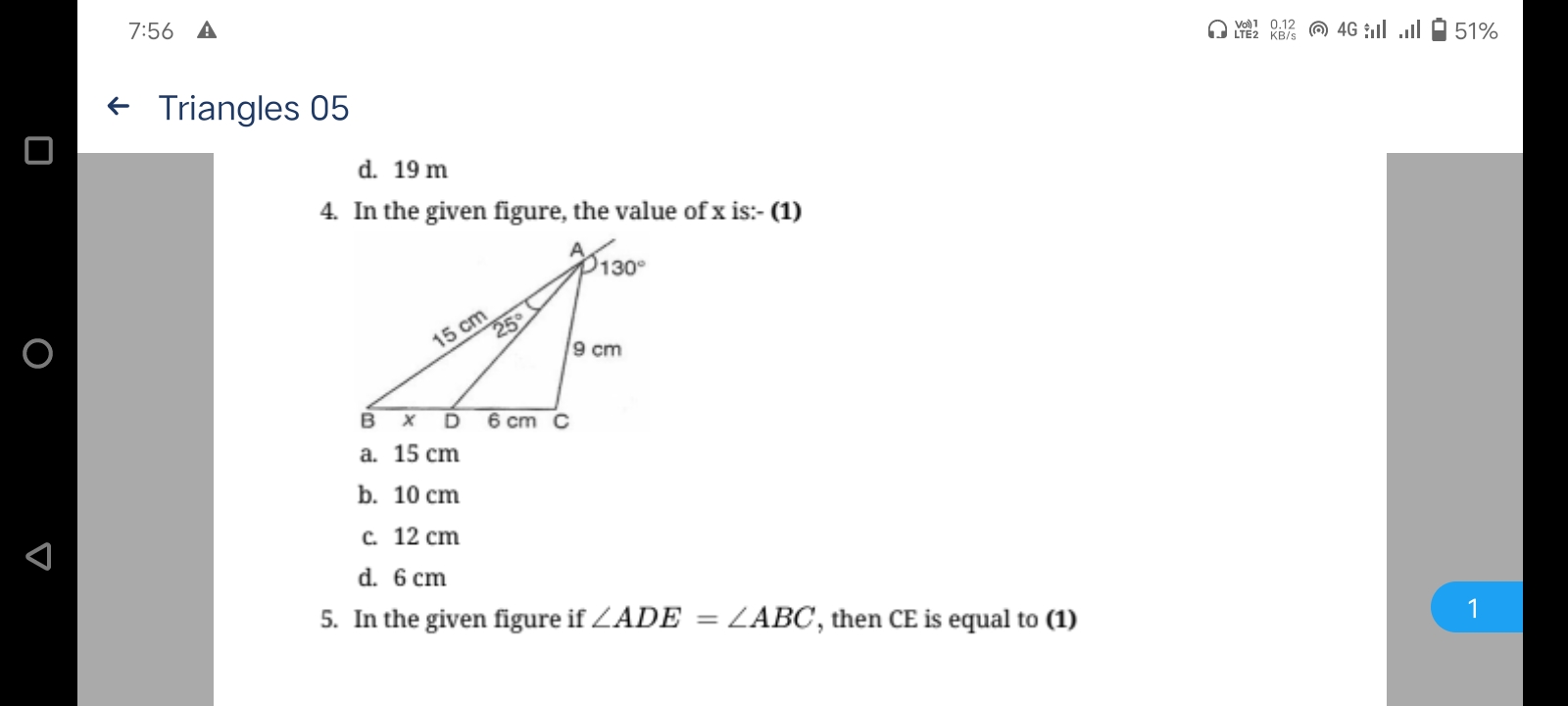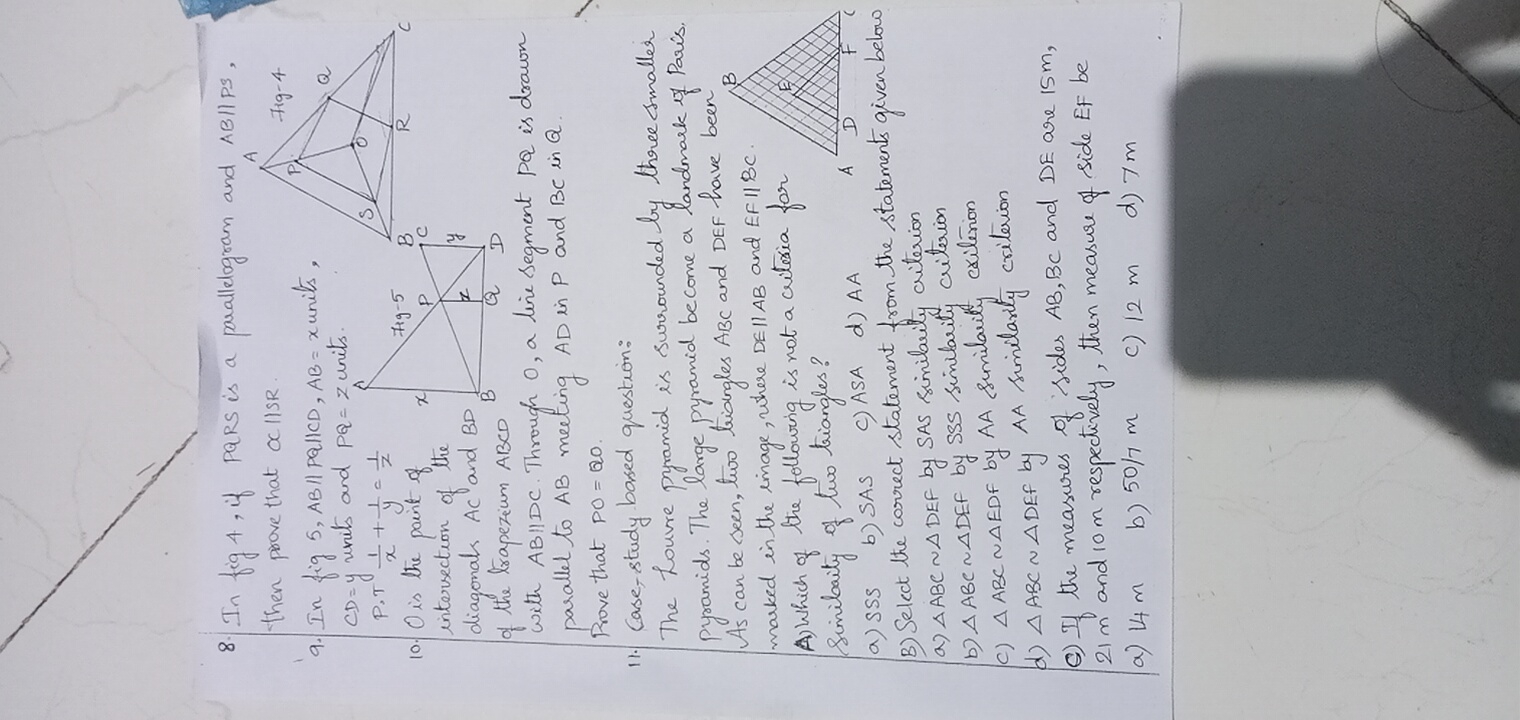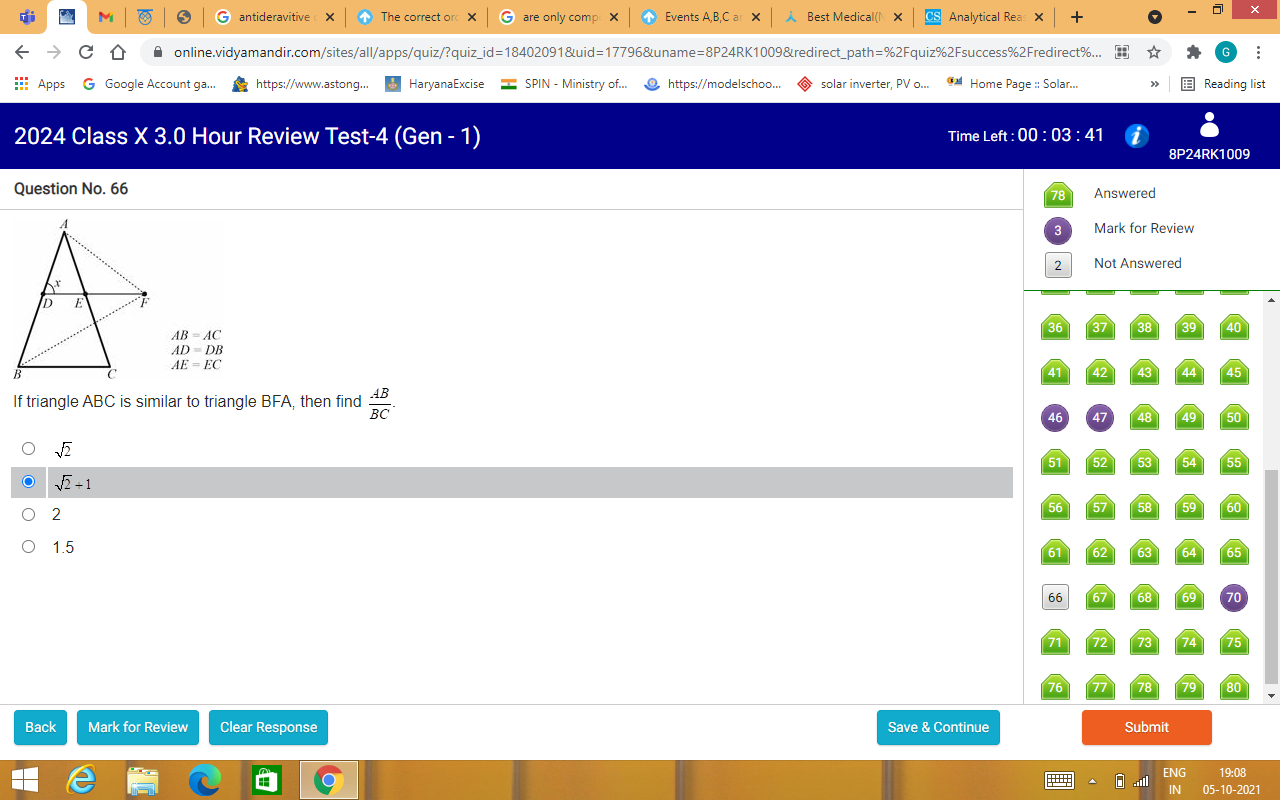CBSE Class 10 Answered
Is Basic Proportionality Theorem only applicable for triangles
Asked by | 25 Sep, 2012, 02:44: PM
You can apply basic proportionality theorem and its converse in triangle only. However on the basis of this concept, you can do some proof for other figures such as parallelograms, quadrilaterals etc.
a
nFor example, consider that you are given with the following question as
d
ABCD as a parallelogram such that P and Q are two points on AB and DC. If AP: PB = 2:3 and PQ || BC and then show that DQ: QC = 2:3.
i
tYou can prove it by drawing diagonal AC and mark the point G where AC and PQ intersect.

Since PQ || BC so, PG || BC.
Now, PG || BC and AP: PB = 2:3.
So, by using converse of BPT, AG: GC= 2:3.
Now, in triangle ACD, AD || GQ and AG: GC= 2:3.
So, by using converse of BPT, DQ: QC= 2:3
Answered by | 25 Sep, 2012, 03:39: PM
Application Videos
Concept Videos
CBSE 10 - Maths
Asked by suryapalsinghgoudmahirajbanna | 17 Sep, 2023, 10:50: PM
CBSE 10 - Maths
Asked by bnarayanamstr | 03 May, 2023, 10:03: AM
CBSE 10 - Maths
Asked by savitamahajan202 | 30 Dec, 2022, 12:51: PM
CBSE 10 - Maths
Asked by bhu.joshi54 | 04 Jul, 2022, 08:18: PM
CBSE 10 - Maths
Asked by bhu.joshi54 | 16 Jun, 2022, 07:56: PM
CBSE 10 - Maths
Asked by dishapalnati82 | 24 Nov, 2021, 09:30: AM
CBSE 10 - Maths
Asked by psinghaladv | 05 Oct, 2021, 07:49: PM










